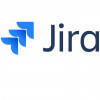Jira Service Management 6.0 renamed to Jira Service Management 10.0
Jira Service Management 10.0.x release notes
Jira Service Management 6.0 renamed to Jira Service Management 10.0
- To streamline Jira Software and Jira Service Management releases, we renamed Jira Service Management 6.0 to Jira Service Management 10.0. It is simply a change in name, no major compatibility issues are expected. More about the name change
Avoid surprises with the change calendar
For: EVERYONE
- Minimize service disruptions and plan changes to critical systems efficiently by creating freeze and maintenance windows in the change calendar. With all events scheduled in the calendar, change approvers can easily assess requests from change requestors and adjust schedules to avoid conflicts.
To start using the change calendar in your project:
- Navigate to Project settings and select Change management.
- Enable the change calendar.
It is enabled by default in projects that use the ITSM template. - In the Default calendar view section, select the start and end date fields.
Change requests are plotted on the calendar based on the data in the custom fields you select here. - Select Save.
Request type field now available in the issue view
For: AGENTS PROJECT ADMINS
We’ve added the Request type field in the issue view to streamline the experience of submitting requests.
This feature bridges a crucial gap in the request creation process, enhancing Jira Service Management’s integration with the Jira platform. As issues can be properly mapped to request types, all service project tickets can now include the necessary context and details, right from the start. This way, requests get directed to the appropriate help channels and workflows, resulting in efficient and quality service delivery.
View all assets imports from one place
For: EVERYONE
Manage your complex import schedules with ease and optimize your import configurations.
Now, you can view the status, history, and schedule of imports configured across all object schemas from a single location. This helps you confidently and efficiently schedule imports, knowing they won’t conflict with other resource-intensive import tasks.
Additionally, you can customize imports to receive notifications about their status so you can take timely action, with minimal manual effort. More about monitoring your imports
To view all imports, in the top navigation bar, select Assets and then select Imports.
ProForma updates
Our latest release, version 8.8.5 of ProForma, includes security improvements and several translation enhancements:
- Accurate translations and contextual language support from a new translation service
- Consistent localization and improvements to the localized user interface, which provides a better experience for all the supported languages
- Support for additional languages (Czech (Czech Republic), Danish (Denmark), German (Germany), English (UK), Spanish (Spain), Finnish (Finland), French (France), Hungarian (Hungary), Italian (Italy), Japanese (Japan), Korean (South Korea), Dutch (Netherlands), Norwegian (Norway), Polish (Poland), Portuguese (Brazil), Russian (Russia), Swedish (Sweden), Chinese (Simplified))
Introducing Data Center Security Hub
We’re pleased to introduce the Data Center Security Hub—your central place for Data Center security documentation.
With the Security Hub, you can proactively manage and enhance the security of your Data Center environment. It offers a wide range of resources to help you navigate the complex landscape of Data Center security effectively. These resources include configuring your instance, monitoring your product health, and managing vulnerabilities.
We’ve also released the Data Center security checklist and best practices for admins. This guide provides valuable insights on safely deploying and administering Atlassian self-managed software.
Turn off the lights with dark theme
In this release, dark theme becomes partially available for the first time. Give it a try right now and enjoy the new experience for reduced eye strain, enhanced content readability, and visual harmony across work environments.
This feature is switched on by default with the Original theme selected. Additionally, the look and feel won’t apply color choices to both themes—if your instance uses a custom header color, it will default to the light theme.
To change your theme, go to your Profile, then Theme, and select Light, Dark, or Match system.
Changes and additions to APIs
To turn off the theming, disable the feature flag: com.atlassian.jira.theme.switcher
Unsupported areas
Because this feature is a beta release, there are some areas that aren’t supported yet.
Upgrade to Atlassian Data Center Platform 7
Jira 10.0 includes an upgrade to Atlassian Data Center Platform 7. This upgrade improves the quality of our response to security changes with reduced disruption and breaking changes for Atlassian Marketplace apps.
As part of the upgrade to Platform 7 and with the focus on enhanced security and performance, we’ve made the following updates:
- Reduced the number of third-party libraries and improving dependency management
- Upgraded numerous Atlassian and third-party components to benefit from the latest security patches and bug fixes
- Improved the overall definition of the Java API
- Implemented the minimum required support for Java 17.
Java 17 becomes the default
Jira 10.0 has been recompiled in Java 17 which is now the default language level. This means that from now on you won’t be able to run Jira in lower Java versions (8 and 11).
End of support for the H2 database engine
In Jira 10.0, we’ve removed support for the H2 database and the H2 library itself from Jira’s distribution. To resolve several security vulnerabilities, the JDBC driver for the H2 database engine won’t be bundled with Jira anymore. Additionally, you’ll no longer be able to evaluate Jira 10.0 using the H2 embedded database.
Updates to Jira automation
With the launch of Jira 9.0, we integrated Jira automation (formerly Automation for Jira) as part of Jira, offering you the convenience of upgrading either through Jira or the Universal Plugin Manager (UPM). To streamline and enhance your experience with Jira automation, we've made the decision to solely offer it as a bundled version starting from Jira 10.0. This is why, going forward, we’ll communicate all Jira automation updates in the Jira release notes.
This means that no future Jira automation versions will be available on the Atlassian Marketplace but we’ll continue to support the security of the existing versions. You'll still be able to access new features and improvements by simply upgrading Jira.
As of Jira 10.0, the bundled version of Jira automation has been updated to align with the changes introduced in this release, including the migration to REST v2.
Velocity template and allowlist security improvements
We're making steps towards verifiably secure installation directories for all Data Center products. These changes not only increase the difficulty for an attacker to exploit filesystem access but also allow customers to verify the state of the product installation.
Starting from Jira 10.0, all Velocity files stored on the filesystem (for example, shared, local home, or any other) will need to be explicitly allowlisted and must be of a specific file type. Files stored inside .jar files and bundled within plugins won't be affected.
In addition, all method invocations within a Velocity template must be explicitly allowlisted. For more information, visit Configuring the Velocity method allowlist and Configuring the Velocity file and file type allowlist.
New default endpoint security annotations
We’re introducing a new set of annotations for Webwork actions, servlets, REST endpoints, and filters to improve endpoint security by giving you better control over access to endpoints. These annotations have been revised to ensure that only the intended users access your application endpoints.
Starting from Jira 10.0, when no annotation is specified, only licensed users will be able to access resources. To change this, annotate all endpoints that require lower security clearance level. You can also annotate all admin and system admin endpoints to provide tighter security measures.
Security monitoring and alerts
Admins can now promptly identify and address critical security threats. This feature helps monitor and detect suspicious activities, such as modifications to important configurations or changing access rights.
When the system identifies a thread, admins receive email alerts. These alerts contain suggested actions to investigate and address any possible security threats effectively.
Authorized users can use this feature to view, search, and categorize alerts. Upon viewing an alert, a detailed chart depicting the user's historical activities is displayed. This functionality empowers security team members to acquire valuable insights into the user's past actions.
Enabling attachment storage in Amazon S3 without a feature flag
S3 object storage offers an enhanced enterprise experience compared to the Network File System (NFS), especially for customers with large or growing data storage needs. Learn more about configuring Amazon S3 object storage
In Jira 9.11, we introduced the possibility of configuring a custom storage method—Amazon S3 (Simple Storage Service). This feature was available behind the feature flag com.atlassian.jira.attachments.storage.configurable.
Starting from Jira 10.0, this behavior is available without a feature flag as all incompatible APIs have been removed. Learn how to store attachments in Amazon S3.


